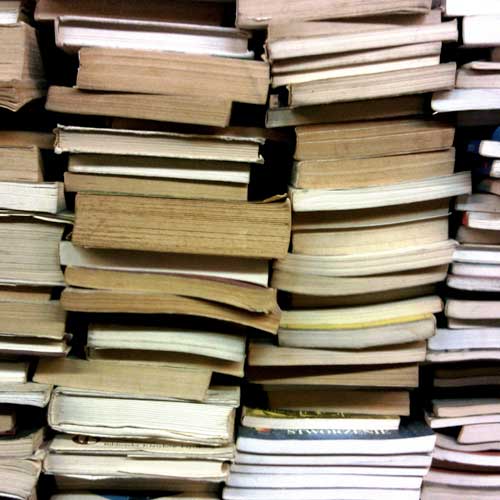
Image: ailatan
We tend to take for granted the notion that the people of the world can or should be taught to read. The ability to read is even used as an indicator of poverty and development. In 1998, the UN defined 80% of the world population as literate, defined as the ability to read and write a simple sentence in a language.
It was not always thus. In ancient times, literacy was the trade secret of professional scribes. A few centuries later, in Europe, literacy was defined as the ability to read and write in Latin. Later still, the bar was lowered, and people were considered literate if they could sign their names: in 1841, 33% of all Englishmen and 44% of Englishwomen signed marriage certificates with their mark.
Public libraries can be intimidating places, designed for the intellectual elite and fiercely guarded by librarians. In biblical times, Assyrian librarians put a curse on anyone who damaged the manuscripts: "May the gods put his flesh in a dog's mouth."
Today, in what has been called the 'information society', anyone with internet access has the key to a world of knowledge. Storage has ceased to be a problem. The truly universal library has arrived.
But long before the days of Google Book Search and the Amazon Kindle was the library, a place of learning and advancement. Here are seven of the most impressive libraries in history, places of intrigue and inspiration.
1. The Great Library & Mouseion: The First Universal Library (Alexandria, Egypt)
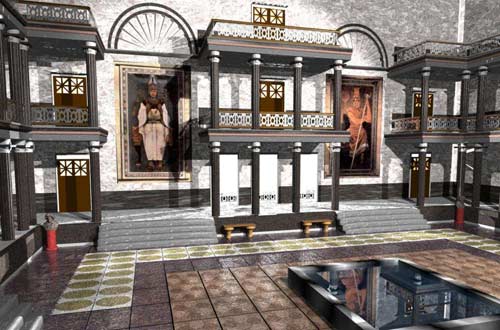
History tells us that the first 'universal' library was the Great Library & Mouseion in Alexandria, Egypt. Hungry for conquest and knowledge, Alexander the Great spent the last 11 years of his life (334 to 333 B.C.) exploring the world. To broaden the enterprise, he dispatched scholars to unexplored regions to gather knowledge and map their journeys.
After Alexander's death, the pharaoh Ptolemy I commissioned the Great Library project, appointing his adviser, Demetrius of Phaleron, to build the library and become its first director. It is said that the Great Library of Alexandria even had an intricate system of registration and classification.
It must be said that the Ptolemies had some fairly shocking methods of stocking what was, above all, a royal library. One involved searching every ship that docked at Alexandria harbour and confiscating any books found. The second method involved twisting the arm of the Athens archives, which very reluctantly agreed to lend the Great Library their books. The Ptolemies then simply kept the originals and sent back copies.
Books are particularly vulnerable and easily destroyed. Tragically the contents of the library in Alexandria were extinguished when, in 48 B.C., Julius Caesar defeated the Ptolemaic forces by setting fire to their fleet. The fire, wrote the Roman poet Plutarch, spread from the dockyards and destroyed the Great Library.
2. The Celsus Library: One of Antiquity's Finest Libraries (Ephesus, Turkey)
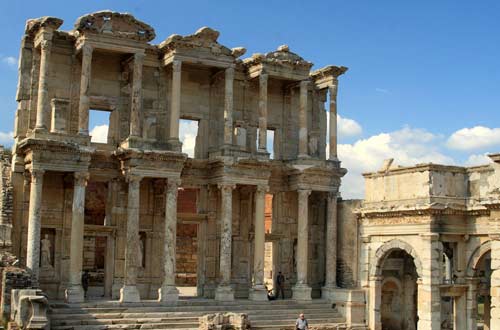
Image: Alaskan Dude
Another early library was the Celsus Library in Ephesus, built in 110 A.D. by the Council Gaius Julius Aquila. The library became one of the largest collections of antiquity, storing an estimated 12,000 hand-written books. Books could not be taken out of the library, but were handed to readers by library officials and read in the reading room.
Interestingly, the library had its own temperature regulation system: a second set of outer walls to protect the books from humidity and temperature variations.
Like the Great Library at Alexandria, the Celsus, too, was destroyed by fire in the third century A.D. but parts of the front wall survived and were restored in the fourth century.
3. The University of Sankore: An Ancient Seat of Muslim Learning (Sankore, Timbuktu)
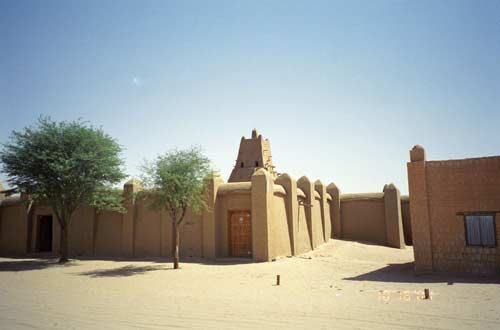
Image: upyernoz
All this copying provided a lot of work for scribes. The University of Sankore in Timbuktu employed an army of scribes, who earned their living copying the manuscripts. As a result, Timbuktu became a repository of an extensive collection of manuscripts.
What were scribes paid? A papyrus of the second century AD gives rates "for 10,000 lines, 28 drachmae … For 6,300 lines, 13 drachmae." Emperor Diocletian tried to standardise the pay scribes received throughout the Roman Empire: "to a scribe for the best writing, 100 lines, 25 denarii; for second quality writing 100 lines 20 denarii; to a notary for writing a petition or legal document, 100 lines, 10 denarii."
Another and later kind of scribe lived in monasteries across Europe, where ancient texts were copied by monks and beautifully 'illuminated'. These books were not for reading, however, especially not by the common people as they were considered objects of religious veneration.
4. The Bodleian: One of The Oldest Surviving European Libraries (Oxford, England)
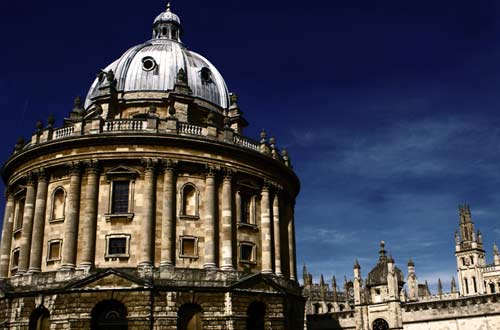
Image: J.Salmoral
It is said that King Charles I once asked the chief librarian of the Bodleian Library if he could borrow a book. A few years later, Oliver Cromwell asked the same question. The librarian refused them both. Stuart or Roundhead, books in the Bodleian could be read on the premises or not at all.
An earlier repository of books and documents at Oxford University was destroyed in the effort to rid England of all traces of Roman Catholicism, including "superstitious books and images". Some were burnt, some sold and others used by glove makers to press gloves. Oxford University was not a wealthy institution and did not have the resources to build up a collection of newly printed books to replace those destroyed.
It was now that Sir Thomas Bodley came forward, providing the cash and even some books to restore the collection. A librarian, Thomas James, was appointed. In 1610, Bodley entered into an agreement with the Stationers' Company of London under which a copy of every book published in England and registered at Stationers' Hall would be deposited in the new library. Although this early agreement was honoured more in the breach than in the observance, it nevertheless pointed to the future of the library as a comprehensive and ever-expanding collection.
The Bodleian collection consisted not only of books and manuscripts; it housed pictures, sculptures, coins and medals, and 'curiosities': objects of scientific, exotic or historical interest. There's even a stuffed crocodile from Jamaica!
Today's Bodleian claims to hold 11 million volumes, and to offer fuller access to online publications and databases than any other academic institution in the UK.
5. Chetham's Library: The UK's Oldest Free Public Reference Library (Manchester, England)
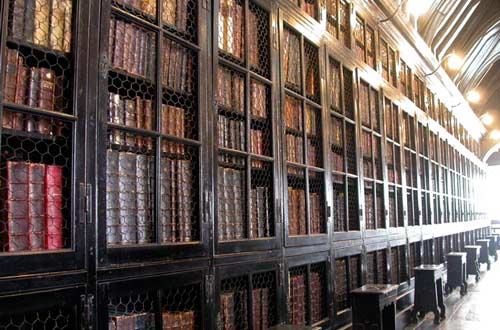
Image: infomotions
Chetham's library is said to be Britain's oldest surviving public library. Karl Marx visited the library in 1846, at the invitation of his friend Frederick Engels. In the bay of the library's reading room, they carried out the research for Das Kapital.
Over the years, water seeping into the masonry of the building has threatened the structure. Fortunately, English Heritage has provided a grant that will be used to restore this beautiful and significant national treasure.
6. Library of Congress: Jefferson's Legacy (Washington D.C., United States)

Image: miss_villanelle
The Library of Congress, founded in 1800, is said to be the oldest federal cultural institution in the United States. However, like the libraries of Ephesus and Alexandria, it became a victim of fire. During the War for Independence in 1814, British troops burned the Capitol building and destroyed the Library's core collection of 3,000 volumes. One year later, however, Congress approved the purchase of Thomas Jefferson's personal library of 6,487 books for $23,950 and the Library was restored.
Today the Library of Congress claims to be the largest library in the world, with nearly 142 million items on approximately 650 miles of bookshelves. The collections include more than 32 million books and other print materials, 3 million recordings, 12.5 million photographs, 5.3 million maps, 5.6 million pieces of sheet music and 62 million manuscripts.
7. The British Library: One of The World's Most Extensive Collections (London, England)

Image: lisabatty
Compared to many other significant libraries, the British Library is relatively young having been brought into existence by the 1972 The British Library Act. The 1971 White Paper recognised that the constituent bodies of the proposed British Library (principally the British Museum Library) were seriously short of space and that rehousing the various collections was of top priority.
The new library combines various components, the best known of which were the library departments of the British Museum, then one of the largest libraries in the world. Lenin had been impressed. It held, he said, a more comprehensive collection of Russian books than the libraries of Moscow and St Petersburg. Other famous visitors to the reading room included Marx, Charles Dickens, George Bernard Shaw and Virginia Woolf.
As is so often de rigueur with projects of such vast scale, the St Pancras building became mired in delays and spiralling costs, but was finally opened by the Queen in June 1998.
Literacy & Power: Inextricably Linked

Image: carf
In today's world of home printing where anyone with a printer could print their own books, it is hard to imagine the efforts once made to prevent people from reading. In twelfth and thirteenth century England, you could earn the right to be tried in an ecclesiastical court (and thus avoid hanging) if you could read Psalm 51 – or if you were smart enough to learn it by heart and fool the clergy.
During the Reformation, the translation of the Bible into the vernacular so that ordinary people could read it was hotly (and often bloodily) contested. By the end of the sixteenth century, unsupervised reading was considered subversive by the secular and theocratic authorities. From the early sixteenth century onwards it was viewed as especially dangerous for women to read fiction.
In the Civil War era in the United States, knowledge was considered dangerous and white citizens in many areas imposed a ban on teaching slaves to read or write. In the years following the Civil War, only those who could read and write could vote, effectively fencing out many African Americans.
The First Public Libraries & The Spread of Knowledge
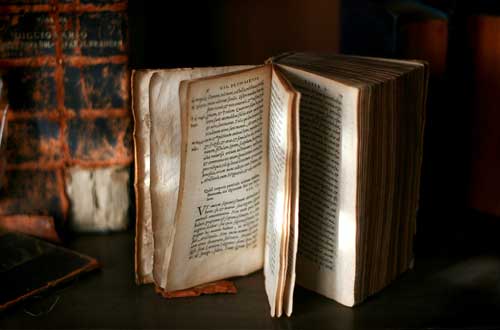
Image: Celeste
The dream of Thomas Bodley was to make collected books "available to the whole republic of the learned".
In the 1840s, William Ewart, Joseph Brotherton, and Edward Edwards espoused a more democratic vision and launched a campaign to provide a system of public libraries. Brotherton and Ewart were both Liberal MPs. Edwards, however, was a Chartist and involved in the struggle for universal suffrage. A former bricklayer, he had educated himself by spending his non-working time in Mechanics' Institute libraries, and in 1839 became an assistant in the Department of Printed Books in the British Museum.
However, when William Ewart introduced his Public Libraries Bill in 1849, he encountered considerable hostility from the Conservatives in the House of Commons. They argued that the rate-paying middle and upper classes would be supporting a service that would be mainly used by the working classes, and harked back to the old argument that: "the more education people get the more difficult they are to manage."
After several fairly significant compromises, the Public Libraries Act became law in 1850. Due to these compromises, libraries were largely unfunded for many years and had to rely on the support of wealthy entrepreneurs. The greatest financial supporter of public libraries was Andrew Carnegie, who helped to finance over 380 libraries in Britain. It was not until 1919 that a truly comprehensive and free library service emerged.
The Democratisation of Knowledge: Cometh The Hour, Cometh The Internet!

Image: Chocolate Geek
Over the centuries, libraries experienced one common feature: they ran out of space. By 295 B.C., the library in Alexandria had run out of space for its fast accumulating collection of books. Under Ptolemy I and II, it was reported that the library housed some over 200,000 books, requiring the building of one of the world's first 'branch' libraries. Like many other libraries, the Bodleian had to claim more and more space to house its growing collection.
We live today in an age of virtual storage and the wide dissemination of knowledge. With the click of a mouse, we can access a vast network of information. More importantly, information is at the fingertips of anyone who can access the internet. We are hugely indebted to the genius of the modern search engine and thanks to new social media news breaks often and fast.
Most national libraries and many branch libraries have developed a network of access to books and manuscripts. Work that used to take months or even years to compile can be found swiftly and easily. Those who used to find public libraries forbidding now explore the virtual world with confidence and equality.
But not all is rosy: global access to knowledge and information still remains a dream for many of those who live in poor and developing countries. The next challenge must be to ensure that they too gain access to the riches of the virtual world because for those of us who are already connected, it truly has been life-changing.